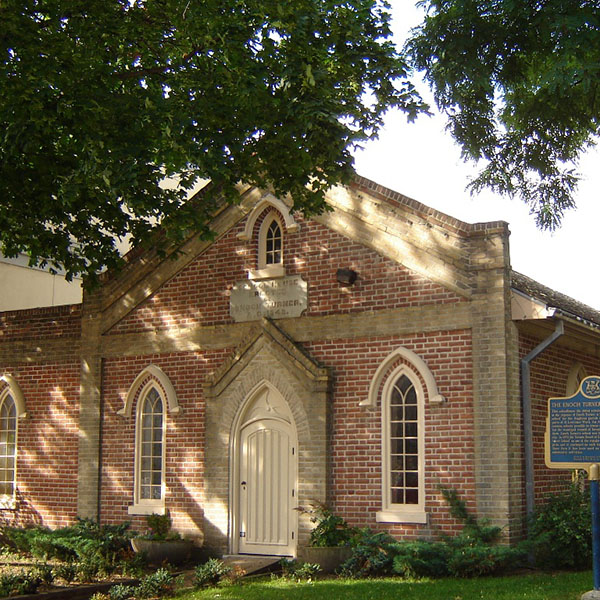Menu
Fulford Place is now closed for the season.
Entertaining
The Fulfords considered entertaining one of the duties of the privileged class. Their house was built with this purpose in mind.
Special care was taken in all the service areas, ensuring that guests at Fulford Place received the best attention that the Fulfords’ wealth could provide.
Fulford Place’s service areas were strategically placed to ensure the most efficient and least disruptive service. A large section of the basement floor was a service area that included a kitchen, a staff dining room (now the volunteers’ lounge), a laundry room (now the Tea Room), a furnace and coal bin (now a boiler room).
On the main floor, the service area was located at the northeast corner and featured a butler’s pantry with a dumb waiter linking it to the kitchen below. Warming closets containing pipes filled with hot water ensured that food was hot before it was taken into the adjacent dining room.
The house’s service areas were linked by an interior service stairwell that allowed the servants to move throughout the house while staying out of sight of the family and any visitors.
Very little is known about the domestic servants who worked in Fulford Place prior to the First World War, however there likely would have been a butler and/or housekeeper, maids, a cook, a laundress and a gardener. The Fulfords travelled extensively during the winter, leaving the live-in servants to maintain the home and grounds while the family was away.
Throughout Mary Fulford’s life, Fulford Place remained a suitable residence to visit for royalty and prime ministers of Canada, including Sir Wilfrid Laurier and William Lyon Mackenzie King.
Entertainment at Fulford Place almost always focused on the river. From the spacious veranda wrapping around the southwest corner of the house, guests had a spectacular view of the mighty St. Lawrence.
The Magedoma
Weather permitting, George Fulford I and his guests spent many hours enjoying the fresh air or boating on the river.
George Fulford I purchased his second yacht, a steam and sail vessel called the Magedoma, around 1904. It was yet another symbol of his social status. Named after his family (MAry, GEorge, DOrothy and MArtha), the 40-metre (138-foot) yacht was built in 1901 in Wilmington, Delaware, by Pusey and Jones.
The Magedoma was the focal point of the Fulfords’ summer social life. The vessel boasted sleeping quarters for 14 and a mahogany dining room with seating for 20 guests.
Exterior retreats
Fulford Place’s facilities included three greenhouses, each over 20 metres (60 feet) long. The two longer glass palm houses were used for entertaining. One housed a small heated pool, sheltered from prying eyes by orchids and lush palm trees. The other contained tropical plants arranged in artful grottos around a goldfish pond.
The Fulfords’ greenhouses were replaced in 1930, and eventually demolished in 1953.
Following her husband’s death, Mary Fulford had her own private retreat built on the estate grounds. It was a rustic log cabin constructed amongst the cliff-side gardens.
Despite its simple appearance, the cabin was not lacking in amenities. It featured two sitting rooms, dining rooms, bedrooms, bathrooms and a kitchen. Mary entertained smaller groups there comfortably.


